Many of us enjoy indulging in a plate of steaming white rice, savouring its pleasant taste and texture. But have you ever wondered about the benefits and history behind this beloved grain? In this blog post, we invite you to dive deeper into the world of white rice and discover fascinating facts that will expand your knowledge and appreciation for this staple food.
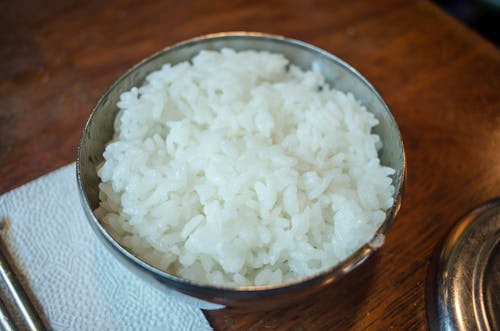
What exactly is white rice?
White rice can be thought of as the polished form of the rice kernel, where the husk, bran, and germ have been eliminated and the starchy endosperm has been left in its place.
In contrast to its brown or wild equivalents, the grain produced by this technique has a refined, white look and a gentler flavour.
Benefits of White Rice
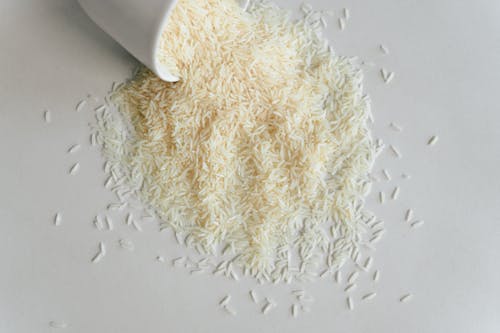
1. Energy Boost
White rice’s high carbohydrate content makes it an excellent source of energy. Our bodies prefer carbohydrates because they give us the energy we need for daily tasks and exercise.
2. Digestive Health
The fibre content in white rice help in maintaining a healthy digestive system. While it contains less fibre compared to brown rice, it is still gentle on the stomach, making it suitable for individuals with sensitive digestion.
3. Gluten-Free Option
For those with gluten sensitivities or coeliac disease, white rice serves as a safe and delicious alternative. It is naturally gluten-free and can be incorporated into a gluten-free diet without any issues.
4. Easily Digestible
White rice is easily digestible, making it ideal for individuals with digestive disorders or those recovering from illness. Its gentle nature ensures minimal strain on the digestive system.
5. Nutrient Enrichment
White rice is often fortified with essential nutrients like iron and B vitamins during the milling process. These added nutrients can contribute to a balanced diet and support overall health. Read this post: Diet and Nutrition: 10 Incredible Ways to enhance your eating habits.
6. Calorie Control
White rice is relatively low in calories, making it a suitable choice for weight management when consumed in moderation. Pairing it with protein-rich foods, vegetables, and healthy fats can create a well-rounded and satisfying meal.
7. Heart health
White rice can also contribute to heart health. While it is often perceived as a high-carb food, incorporating rice into a heart-healthy diet can still be advantageous. Read this post: Type 2 Diabetes: How to understand and treat symptoms.
8. Post-Workout Recovery
As a quick source of easily digestible carbohydrates, white rice can be beneficial for post-workout recovery. Consuming it after exercise helps refill glycogen stores and helps in muscle recovery.
9. Versatile and Easily Absorbed
Due to its mild flavour and soft texture, white rice is easily absorbed by the body. This quality makes it a suitable choice for individuals with dietary restrictions or those who need a soft-textured food option.
Are you aware of how many calories white rice contains?
White rice is a widely consumed staple food that is renowned for supplying energy. A cup of cooked white rice typically has 200 calories in it.
It contains certain important elements like thiamine, niacin, folate, and iron but has less fibre than brown or wild rice.
For a balanced diet, it’s crucial to think about portion sizes and include a range of nutrient-rich foods in your meals.
Always seek personalised counsel from a healthcare expert based on your unique needs.
Do you Know How Much Sugar White Rice Has?
A common ingredient in many cuisines, white rice is a carbohydrate-rich diet. has a small amount of sugar, even though it does contain natural sugars.
Less than 1 gramme of sugar is typically found in a cup of cooked white rice. mostly made up of starch, a complex carbohydrate that gives energy.
It contains a relatively high glycemic index, which means it can quickly raise blood sugar levels.
It is vital to keep this in mind. Brown rice and quinoa are suitable substitutes with lower glycemic index for people who need to control their blood sugar levels.
The Protein Content of White Rice
A commonly eaten grain with a high carbohydrate content is white rice. has a low protein content when compared to other protein-rich foods, though.
Around 4 grammes of protein are generally included in one cup of cooked white rice.
However, when compared to animal products, legumes, or other grains like quinoa, it is not thought to be a significant source of protein.
White Rice Recipes
White rice can be used to make a variety of yummy dishes due to its mild flavour and adaptability. Here are a few straightforward and tempting dishes that maximise the use of this common grain:
1. Simple white rice
- Start by rinsing 1 cup of rice in a fine-mesh strainer under cold water to remove excess starch before cooking it to make simple, fluffy white rice.
- 2 cups of water and a dash of seasoning salt should be put in a saucepan.
- Over a medium-high flame, gently bring the water to a boil.
- When the water has been absorbed and the rice is tender, turn the heat down to low, cover the pan with a tight-fitting lid, and let the rice simmer for 15 to 20 minutes.
- After turning off the heat, let the rice sit in the covered pot for 5 to 10 minutes.
- Lastly, separate the grains of rice by fluffing them with a fork.
Serve the plain rice as a flexible side dish or as the foundation for various dishes.
2. Fried Rice
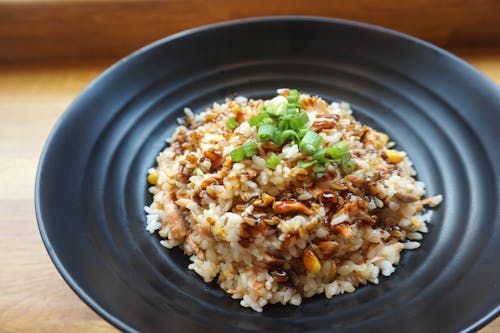
- Start by cooking 2 cups of rice per the directions on the package if you want to make delicious fried rice.
- After being finished cooking, let the rice cool.
- Heat up some oil in a skillet or wok over a medium-high flame.
- Stir-fry vegetables, such as bell peppers, peas, onions, and carrots, until they are tender.
- Two eggs should be cracked into the empty space left by pushing the vegetables to one side of the skillet.
- Break up the eggs as you scramble them until they are cooked.
- The rice should then be added to the skillet along with the vegetables and eggs and stir-fried.
- After adding the soy or oyster sauce, stir-fry the rice for a few more minutes to ensure everything is well-combined.
- If you’d like, you can also include cooked proteins like diced chicken, prawns or tofu.
- Serve hot and garnish with finely chopped green onions.
Take pleasure in this tasty homemade fried rice as a filling main dish or as a side dish to go with your favourite Asian-inspired dishes.
3. Rice Congee
- Start by washing 1 cup of white rice in cold water until the water runs clear if you’re making easy congee at home.
- The rinsed rice should be combined with 6 cups of water or chicken broth in a big pot.
- Add a piece of peeled, minced ginger to the congee to give it a delicious flavour.
- Over medium-high heat, bring the mixture to a boil.
- Then, lower the heat to low, cover the pot, and let the mixture simmer.
- Once the rice has broken down and the mixture has thickened to a creamy consistency, simmer the congee for about 1 to 1 1/2 hours, stirring occasionally to prevent sticking.
- You can change the thickness by including more water or broth if preferred.
- Congee should be served hot, and toppings like sliced green onions, fried shallots, sliced chicken, boiled eggs, a drizzle of soy sauce, or a dash of sesame oil can be added as desired.
- For a hearty breakfast, lunch, or dinner that will warm you from the inside out, try this simple congee recipe.
4. Moroccan Chicken Tagine with white rice
This flavorful dish is a slow-cooked masterpiece that combines tender chicken, a medley of vegetables, and a variety of spices.
- Start by browning chicken pieces in a deep skillet or tagine with a little olive oil.
- Once the chicken is golden, remove it from the pan and continue to sauté the onions, garlic, and a dash of saffron.
- Put the chicken back in the pan and add diced tomatoes, preserved lemons, olives, and a mixture of cumin, paprika, and ginger from Morocco.
- The tagine’s flavours will meld and the chicken will become tender if it is covered and simmered slowly.
- Allow the fragrant sauce to permeate each grain of fluffy white rice as you serve this tempting dish.
It’s a feast with Moroccan influences that will take you to the vibrant culture and bustling spice markets of this stunning North African nation.
5. Japanese Curry Rice
Enjoy the soothing tastes of Japanese Curry Rice, a well-liked dish that combines the best elements of Japanese and Western influences. This flavorful and filling dish is simple to make and will satisfy your cravings.
- In a large pot, start by sautéing potatoes, carrots, and onions until they are tender.
- Add the meat of your choice—beef, chicken, or pork—and cook it until it is browned.
- The aroma can then be improved by adding a little curry powder, garam masala, and garlic powder.
- Add vegetable or chicken broth, and simmer the mixture until the meat is thoroughly cooked and the flavours are harmonious.
- Add a dash of soy sauce and a spoonful of honey for sweetness to finish.
- Serve your fragrant Japanese curry over a hotbed of white rice so that the smooth, rich sauce can cover each grain.
Japanese Curry Rice is a warming and filling dish that will take you to the streets of Japan with every bite thanks to its delightful spice mixture and tender meat.
Types of rice
- Based on the length of the grains, rice is often categorised into three categories: long, medium, and short.
- The texture of cooked rice and, consequently, its traditional preparation and use, are determined by the length of the grain.
The History of Rice
White rice’s history dates back a very, very long time to ancient China. Around 10,000 years ago, people in the Yangtze River basin learned how to grow rice. They discovered that rice might be a tasty and filling dish.
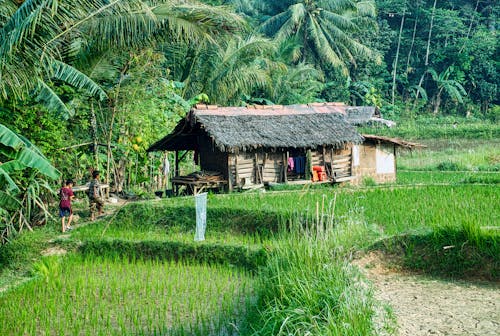
Origin of rice
Around 10,000 years ago, humans in ancient China were the first to learn how to cultivate and consume rice. Over time, they discovered how to polish rice, removing the outer layers to produce rice with a softer flavour and smoother texture.
Through commerce and exploration, it spread to several cultures and became a common dietary option. Rice is now consumed all over the world and has a key role in cultural culinary traditions.
How rice has evolved over time
Over time, rice has changed and improved in many different ways. When rice was first consumed, it was known as brown rice and had all of its outer layers still attached.
White rice, on the other hand, is the outcome of polishing rice to remove the outer layers as farming techniques improved. It looked better and lasted longer thanks to this treatment.
White rice has been a common dish in many cultures due to its milder flavour and softer texture over the years.
Today, white rice is still commonly consumed and relished in a variety of cuisines around the world, even though brown rice is also valued for its nutritious qualities.
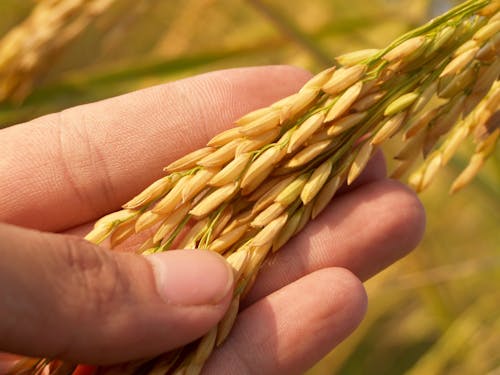
White rice is frequently fortified with extra nutrients in the US and many other nations, such as iron and B vitamins including folic acid, niacin, thiamine, and more. Here are some,
Examples of rice in different cultures
A versatile grain, rice has made its way into the cooking customs of many different nations all over the world.
- It is a fundamental component of dishes like fried rice, sushi, and stir-fries in Asian cuisine.
- White rice is a staple ingredient in meals like Arroz con Pollo and Gallo pinto in Latin American cuisine, where it is frequently consumed with delicious beans, meat, or vegetables.
- In Middle Eastern pilaf meals, fragrant herbs, spices, and occasionally nuts or dried fruits take centre stage.
- It is a common ingredient in rice and peas and other Caribbean meals where coconut milk is used to give the food a rich, fragrant flavour.
- Rice has become a popular ingredient in innumerable traditional meals across numerous cultures, adding substance and enhancing flavours in places like Europe, Africa, and the Americas.
Conclusion
white rice can be a valuable addition to your meals, providing energy, and digestive support, and serving as a gluten-free option. Its versatility, ease of digestion, and nutrient enrichment make it a popular choice for many individuals.
However, it is essential to maintain a balanced approach to your overall diet and incorporate other whole-grain options for added nutritional benefits. Embrace the health advantages of rice while exploring a diverse range of ingredients to support your well-being.

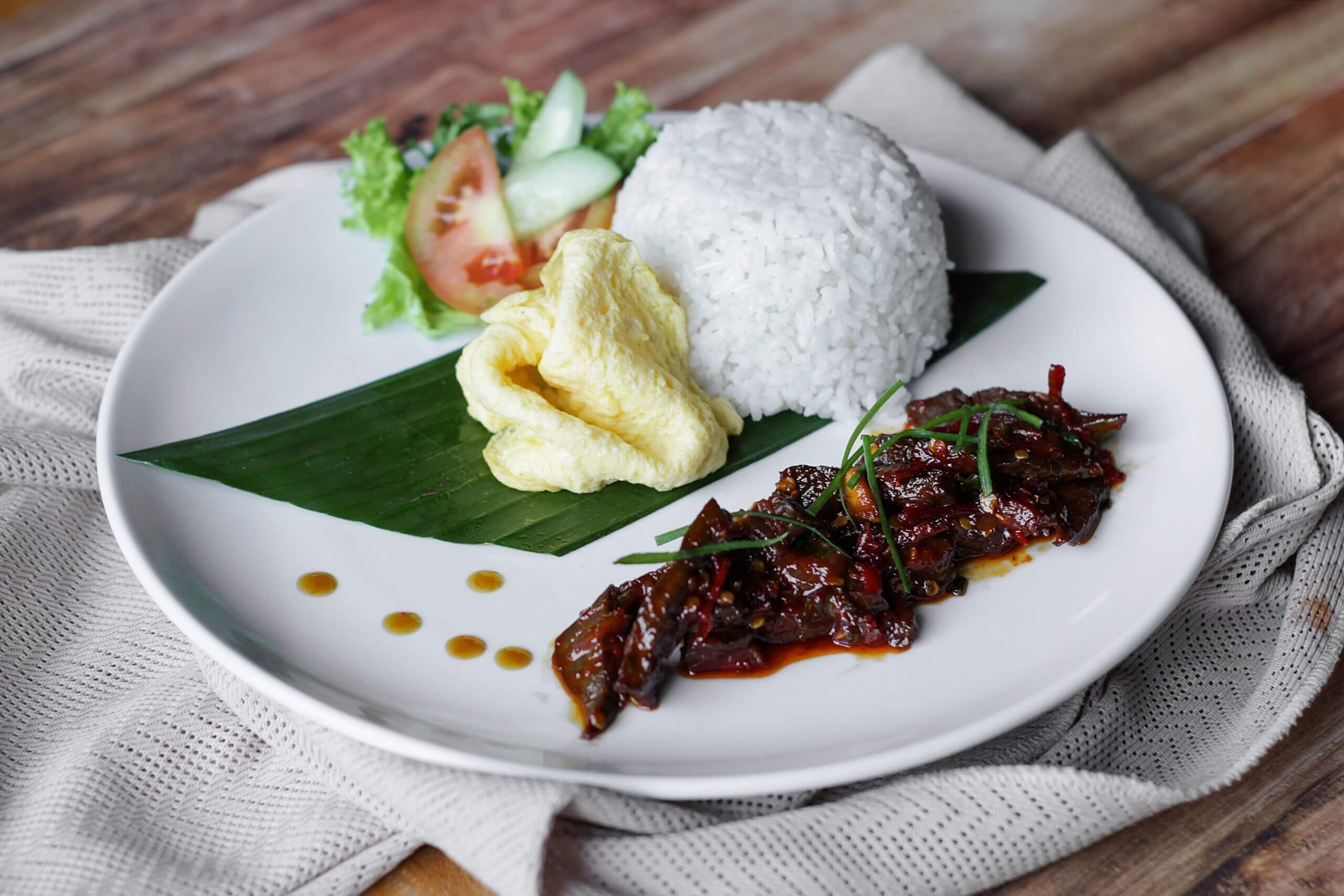

naturally like your web-site however you need to test the spelling on quite a few of your posts. A number of them are rife with spelling problems and I find it very bothersome to inform the truth on the other hand I抣l certainly come again again.
I’m glad you read my blogs; I apologize for the spelling errors; I’ll definitely work on them.
Hi, i think that i saw you visited my site so i came to 搑eturn the favor?I’m attempting to find things to enhance my site!I suppose its ok to use some of your ideas!!